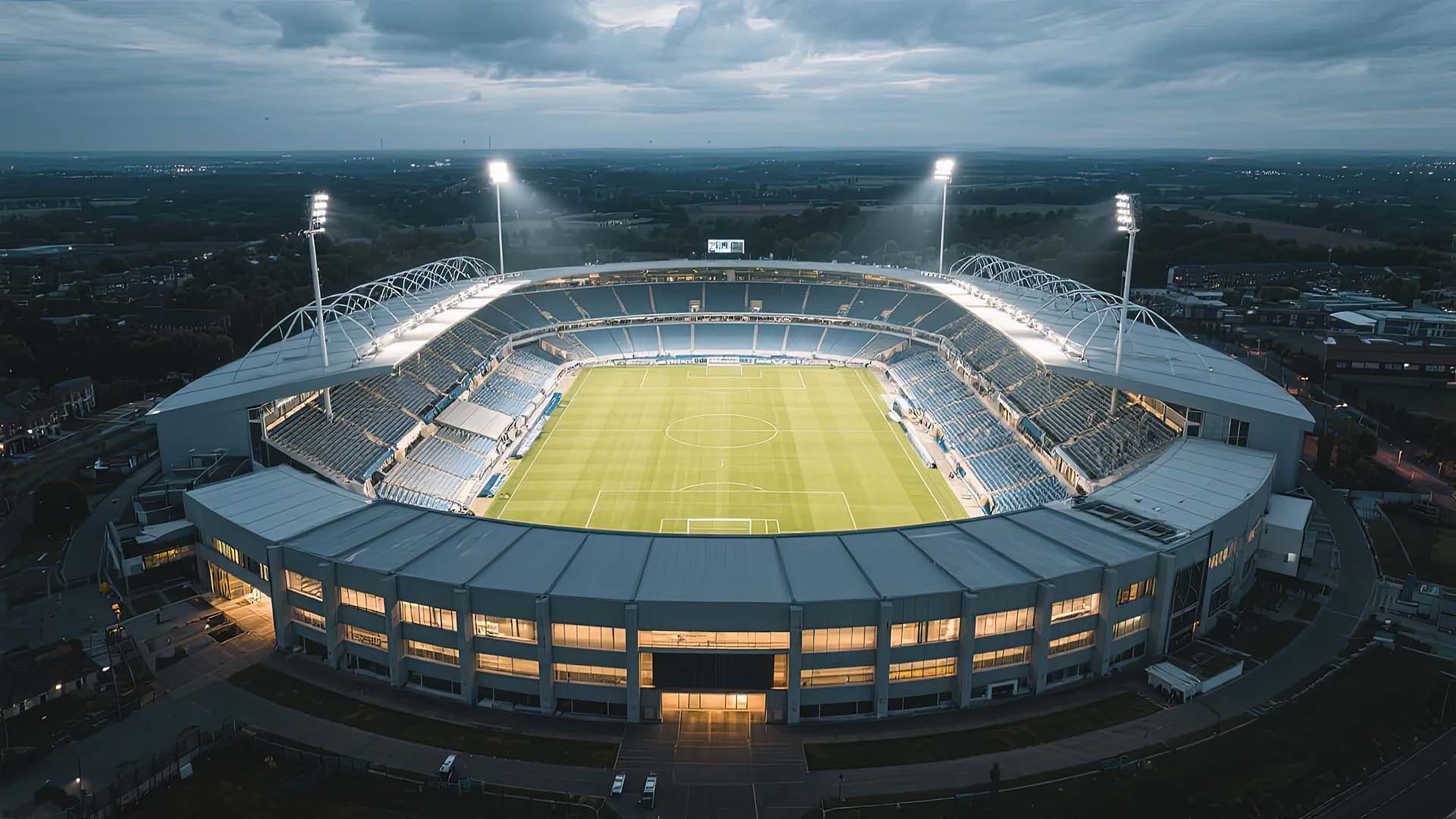Should I Host a Corporate Team Building Event?
Should I Host a Corporate Team Building Event?
Are you wondering whether a corporate team-building event is worth the investment? While they might seem optional or purely recreational at first glance, these events play a crucial role in improving team dynamics and boosting productivity. This is especially true in today's fast-paced work environment, where strengthening a strong team spirit is more important than ever. In the following article, we’re going to discuss why hosting one of these events is beneficial and how to plan it effectively.
What is a Corporate Team Building Event?
A corporate team-building event is designed to strengthen relationships within a team and improve various workplace competencies. These events range from simple in-office activities to elaborate outings and workshops. The core idea is to take employees out of the traditional office setting, encouraging them to participate in activities that require collaboration, creativity, and communication. The format might include problem-solving tasks, physical challenges, or creative workshops, all aimed at breaking down barriers and promoting a unified work culture.
The Benefits of Hosting a Corporate Team Building Event
Hosting a corporate team-building event can offer numerous advantages for your business and is crucial for sustained growth and creating a positive workplace atmosphere. Here are some key benefits:
Enhanced Communication
Team building exercises are designed to nurture open communication among colleagues and between different levels of an organization. Improved communication leads to better understanding and fewer misunderstandings in the workplace.
Boosted Morale and Engagement
These events help break the monotony of the daily routine and can significantly boost morale. A fun and engaging team-building session shows employees that the company values their well-being and satisfaction, leading to increased loyalty and lower turnover rates.
Encourages Creativity
By stepping away from the conventional work environment, employees can think more freely and express new ideas. This can lead to innovative solutions to workplace challenges and a fresh approach to daily tasks.
Problem Solving and Collaboration
Team building activities often require participants to work together to solve complex problems, which mirrors the dynamics of managing a project at work. This can enhance the ability to strategize collectively and improve overall team performance.
Identifies Leadership Qualities
Such events can also be a great platform for identifying potential leaders within your team. Employees often step up in unexpected ways during challenges, showing their capability to lead peers.
How to Host an Effective Team-Building Event
Creating an effective team-building event involves careful planning and a clear understanding of the desired outcomes. Here are some key steps to ensure your event runs smoothly and enhances team cohesion and productivity.
Choose the Right Activities
Select activities that align with the objectives of your team-building event. Whether you aim to improve communication, boost morale, or encourage creativity, choose exercises that challenge and engage participants in these areas.
Location Matters
The venue for your team-building event can significantly impact its success. Choose a location that accommodates your activities and is accessible to all employees. Whether it’s an outdoor space for physical activities or a cozy conference room for workshops, the setting should facilitate interaction and comfort.
Schedule Wisely
Timing is crucial. Plan your team-building event during a period that minimizes disruption to work while maximizing attendance. Avoid busy periods where deadlines loom large, as this can affect participation and engagement. A well-timed event can serve as a refreshing break from routine that re-energizes your team.
Use Engaging Decorations
Incorporating lively decorations such as balloon decor can greatly enhance the atmosphere of your team-building event. For instance, balloon arches can create a grand entrance or serve as the perfect photo backdrop. Additionally, balloon garlands and columns can infuse the event space with color and festivity, thereby making the environment more inviting and enjoyable. Either way, these decorations not only beautify the setting but also contribute to the spirit of fun and unity that you aim to cultivate.
Facilitate Open Communication
Facilitate open dialogue and feedback during and after the event. Provide opportunities for employees to express their thoughts on the activities and the event as a whole. This feedback is invaluable for assessing the effectiveness of the event and planning future activities.
Team Building Event Ideas
Planning a team-building event involves more than just gathering everyone in a room. It's about creating an experience that promotes genuine connections, enhances skills, and improves team dynamics. Here are some engaging team-building event ideas that can help achieve these goals effectively:
Outdoor Adventures
Promote teamwork and a sense of adventure with outdoor activities. Options like a ropes course, kayaking, or a group hike not only provide fun and challenge but also push team members to collaborate in new environments. These activities can help break down formal workplace barriers and invigorate your team.
Workshop Sessions
Organize workshops that focus on developing specific skills, such as leadership, communication, or creative thinking. These sessions can be led by experts in the field and provide practical tools that employees can use in their daily tasks. Workshops also offer a platform for team members to engage intellectually and learn from each other.
Escape Room Challenges
Escape rooms are a popular team-building activity that requires problem-solving, teamwork, and quick thinking. They are an excellent way for teams to practice working under pressure while having fun. Perhaps the best part is that escape rooms come in various themes and difficulty levels to suit your team’s needs.
Sports Day
A sports-themed day can bring out healthy competition and sportsmanship. Organize a mini-Olympics with activities that cater to all fitness levels or simple team sports like soccer or softball. This type of event contributes to physical health, relaxation, and team interaction in a casual setting.
Cooking Competitions
Host a cooking challenge where teams have to create a dish or a full meal. This activity requires cooperation and creativity, allowing team members to bond over food preparation and dining. It’s a relaxing and enjoyable way to encourage team spirit and can be a delightful culinary adventure.
Charity Work
Organize a team-building event that gives back to the community, such as building homes for the needy, preparing meals at a local shelter, or a cleanup day. This not only promotes teamwork but also adds a feel-good factor to your corporate social responsibility efforts.
Tech-Free Retreats
The fact is that we live in a digital world, so a tech-free retreat can be a refreshing change. Activities can include meditation, yoga, or mindfulness workshops that help reduce stress and improve focus. Without the constant interruptions of phones or emails, employees can connect more deeply with one another.
Wrapping Up
The bottom line is that hosting an effective team building event is about more than just having fun. It’s about strategically promoting the skills and relationships that make your team stronger and more cohesive. Remember, the right activities, perfect timing, and a supportive atmosphere are keys to success. By following these guidelines, you can ensure that your team building event is a productive and enjoyable experience for all participants.
Are team-building activities worth it?
Team building activities are indeed worth the investment. They enhance collaboration, improve communication, and boost morale within the team. By participating in these activities, employees can better understand each other's strengths and weaknesses, fostering a more cohesive and productive work environment.
Should I decorate for a team-building event?
Decorating for a team-building event can set the right tone and make the occasion feel special. Simple decorations that reflect the theme of the activity or the company’s culture can help participants feel more engaged and relaxed, encouraging a positive and collaborative atmosphere.
What makes a successful team-building event?
A successful team building event is marked by high engagement and positive feedback from participants. It should include activities that are inclusive and cater to the diverse interests and abilities of all team members. Clear objectives, good planning, and a fun, relaxed environment are also crucial components.
How do you host a team-building event?
To host a team-building event, start by defining your goals and choosing activities that align with them. Plan the logistics carefully—consider the venue, equipment, and catering. Make sure the activities are inclusive and enjoyable for everyone. Facilitate the event to keep energy high and ensure that the team's objectives are met.









